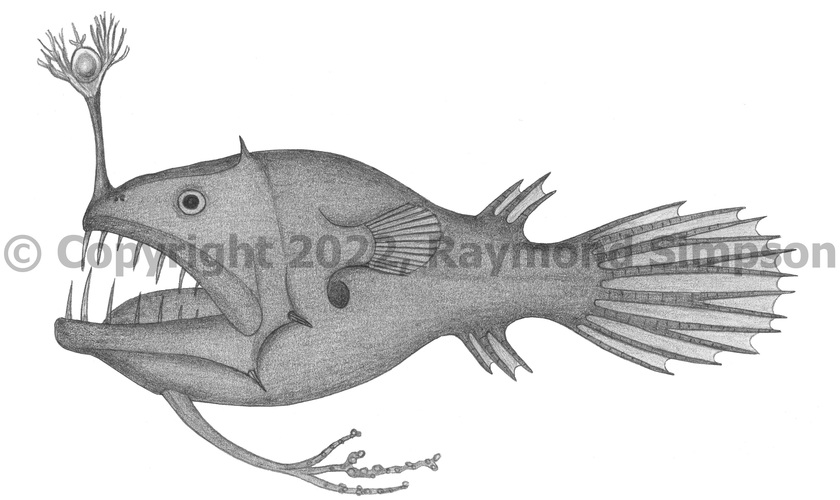
Common Name
Largetooth Leftvent
Year Described
Regan, 1925
Identification
Dorsal Fin: 3 (rarely 4)
Anal Fin: 3 (rarely 2 or 4)
Pectoral Fin: 15-17
Caudal Fin: 2 simple + 4 branched + 3 simple (last short)
Branchiostegal Rays: 5 (rarely 4)
Females: Body nearly globular with a huge head. Mouth huge and oblique (more than a third of body length), with several rows of well spaced teeth varying from long to short. Vomer with long teeth. Head with strong sphenotic spine. Spines on quadrate and articular absent. Two strong spines on rear edge of preopercle. Illicium short but present, with pterygiophore almost completely buried in skin of head. Esca with large bulb and a slender distal appendage with three pairs of branched lateral filaments on side of bulb. No anterior or posterior escal appendages. Hyoid barbel well developed and long (24-80% SL). Barbel with main branch undivided at base but divided distally into three main secondary branches. Ends of secondary branches with numerous filaments and luminous nodules. Pectoral fin small and inserted high on body beyond midpoint. Dorsal and anal fins far back near caudal fin base. Caudal fin has simple and branched rays. Skin completely smooth (lacks spinules, bristles, or bucklers). Vent on left side of body (unique to family).
Males: tiny and parasitic. Body elongated. Olfactory organs well developed. Barbels absent in adults. Jaw teeth present in free living males.
Color
Body dark brown to blackish. Esca, hyoid barbel, head spines, and caudal fin whitish. Esca and hyoid barbel bioluminescent.
Size
Females range from 19-91mm SL. Males ~21mm SL.
Habitat
Taken in deep midwater or towards the bottom from 300-1000m.
Range
Maine to Florida and the Gulf of Mexico. Known from the northwestern Atlantic and in the eastern Pacific (holotype).
References
Pietsch, T.W. 2009. Oceanic Anglerfishes: Extraordinary Diversity in the Deepsea. University of California Press. 557pp.